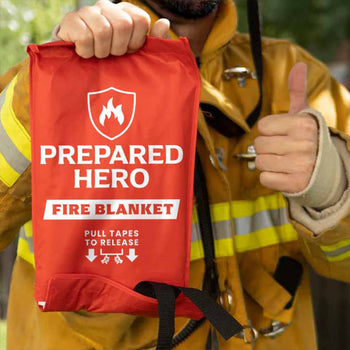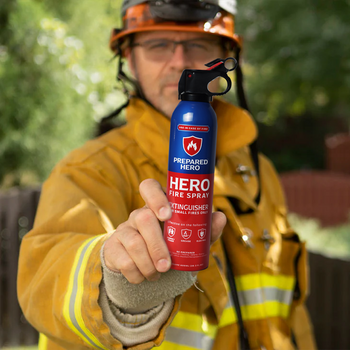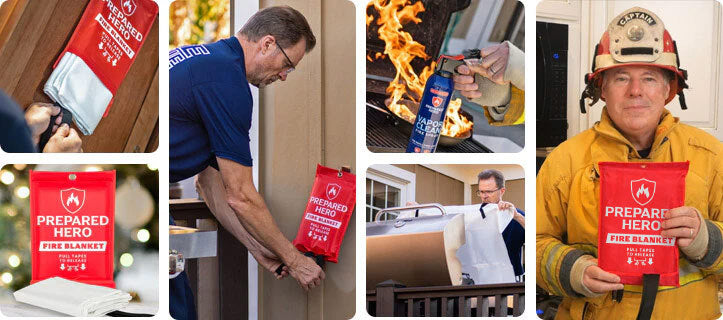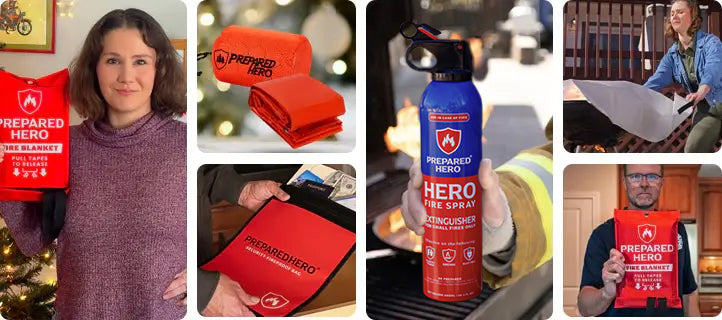Where you put your smoke detectors matters just as much as installing them. Proper placement makes sure they can detect...
The NFPA reports that home fires cause 75% of fire deaths and 74% of fire injuries. When it comes to keeping your home safe from fire, being ready is crucial. This is where fire blankets come in.
Fire blankets are designed to protect your family and property from small fires. You've probably seen them hanging on your friend’s kitchen wall or office break room.
But do fire blankets really work? If yes, how do they put out fires? What materials are they made of? In this post, we’ll talk about fire blankets in detail to see if they work.
What Is a Fire Blanket?

A fire blanket is a fire safety tool designed to put out starting fires. It’s basically a sheet made of woven fire-resistant materials that can withstand extremely high temperatures. A fire blanket is placed over a fire to suffocate it. The flames will eventually die since fire can’t continue burning without oxygen.
Fire blankets are usually made of fiberglass, silicone, cotton, wool, or a combination of the said materials. They are folded into a quick-release position and usually come with tabs for easy deployment.
In addition, fire blankets are typically used to put out small kitchen fires, especially those that involve vegetable oil. They can also be used in offices, laboratories, factories, and other commercial settings.
Unlike fire extinguishers, fire blankets don’t leave a mess. They’re also easy to use since they don’t require training. This is helpful for someone who can’t carry or is inexperienced with fire extinguishers.
How Do Fire Blankets Work?

Let’s talk about the fire triangle to better understand how fire blankets work. The fire triangle is composed of three elements: heat, fuel, and oxygen.
Heat dries out the fuel and warms up the surrounding air. Unfortunately, combustion reactions also produce heat as they burn and increase the fuel's temperature.
Fuel refers to the materials burned. These include oil, wood, paper, fabric, plastic, and gas. Unfortunately, our homes are filled with fire hazards that can be fuel. Some materials also burn more easily than others, making fuel the most difficult element to remove.
The third element is oxygen. Like the two elements above, oxygen must be present to sustain a fire. In particular, oxygen reacts with fuel to release heat and combustion products like smoke and embers. This process is called oxidation.
You see, the atmosphere contains 21% oxygen. According to the National Fire Protection Association, most fires require at least 16% oxygen, so there’s plenty of oxygen in our atmosphere to start a fire. On the positive side, oxygen is the easiest component to remove.
Fire blankets take advantage of this by depriving fires of oxygen. Since they’re made of fire-resistant materials, they can withstand high temperatures without igniting. They can also last long enough for the flames to die.
What Are Fire Blankets Made Of?

Fire blankets are made of materials that can put out small fires or save someone on fire. These fire-resistant materials include fiberglass and silicone.
For instance, Prepared Hero’s fire blankets― the Emergency Fire Blanket and Hero Fire Blanket― are made of 100% flame-retardant materials. In particular, they have two layers. The outer layer is made of woven fiberglass, while the inner layer is made of fire-retardant film. These materials conform to CE safety standards (EN 1896:2019) and can isolate temperatures up to 1,076°F (580°C).
Types of Fire Blankets

To see if fire blankets really work, we need to understand the types of fire blankets. Here they are:
1. Fiberglass Fire Blankets
Fiberglass is a fire-resistant material commonly used to make fire blankets. They are woven into sheets to put out common household fires, like grease and electrical fires. In addition, fiberglass blankets like the Emergency Fire Blanket and Hero Fire Blanket are lightweight and easy to store.
2. Cotton Fire Blankets
Unlike fiberglass, cotton is not fundamentally fire-resistant. It has to be processed with fire-resistant chemicals to work. While not as effective as fiberglass, cotton fire blankets can help extinguish small fires. They can also be used during fire emergencies with minimal direct contact with flame. Cotton fire blankets can also protect your skin from heat when escaping a burning house.
3. Wool Fire Blankets
According to the International Wool Textile Organization, wool is naturally flame-resistant. However, for it to be used in fire blankets, it has to be soaked in flame-retardant fluid. This process boosts the fire-resistant properties of wool, which has an ignition temperature of 570 to 600°C.
4. Silicone Fire Blankets
While only coated with silicone, these fire blankets can withstand temperatures up to 600°C. Welders mainly use them to shield floors from hot sparks. For this reason, silicone fire blankets are huge and heavy.
5. Combination Fire Blankets
Also known as hybrid fire blankets, these are made of different materials, including fiberglass, silicone, and other synthetic materials. They can also withstand high temperatures (the exact temperature depends on the manufacturer), making them ideal for industrial settings where huge fires might break out.
If you want to know more about the types of fire blankets and how to pick the best one based on your needs, check out our guide.
Do Fire Blankets Work in Different Settings?

Fire blankets don’t just work in theory. Time and time again, they have worked in real-world fire emergencies. From small kitchen fires to scary sparks, fire blankets have helped people prevent property damage, injuries, and deaths. Here are the top places where fire blankets are used:
Homes
Fire blankets are used in residential settings to put out small fires in the kitchen, living room, bedroom, garage, and workshop. These incidents are common in homes and can quickly become disasters if not solved promptly.
Restaurants
Restaurants are prone to fires because a lot of people cook there. While many restaurants have kitchen fire suppression systems, fire blankets give staff extra protection. They’re also easy to deploy and put out fire in seconds, so cooking can resume as soon as possible.
Schools
Educational institutions, including high schools and universities, have fire safety protocols that involve fire extinguishers and fire blankets. When a fire occurs at school, students and teachers can easily use fire blankets to safely extinguish small fires or have enough time to evacuate the premises.
Laboratories
Laboratories contain many flammable solvents and equipment like acetone, ethanol, bunsen burners, and matches. Splashes and spills in laboratories can also lead to fires that spread quickly because of the flammable materials in the lab.
Offices
Like home kitchens, office kitchens or break rooms are prone to fire. It’s because they contain cooking appliances like microwaves, toaster ovens, and coffee makers. A fire blanket in an accessible, visible location helps office workers put out small fires before they spread.
Factories
Fires can easily occur in factories with all the machinery and flammable materials around. Since fire blankets are easy to use, anyone without training can grab one and act fast. Workers can also use a fire blanket to protect themselves while escaping, making it a practical and essential safety tool in a busy factory.
So, Do Fire Blankets Really Work?
Now, onto the burning question: do fire blankets really work?
Yes, fire blankets really work. They work because they deplete fires of oxygen, are made of fire-resistant materials, and can put out small fires in different settings.
Fire can’t continue burning without oxygen, so taking the said component extinguishes the fire. Oxygen is also the easiest fire triangle element to remove, so a fire blanket is a practical choice.
In addition, fire blankets are made of fire-resistant materials like fiberglass, silicone, and wool. They can withstand extremely high temperatures, which gives them enough time to put out the fire.
Lastly, fire blankets work in many settings, including homes, restaurants, schools, offices, laboratories, and factories. Millions of people worldwide have used fire blankets, so you can trust them.
If you’re looking for a reliable fire blanket made of high-quality, flame-resistant materials that conform to CE safety standards (EN 1896:2019), check out the Emergency Fire Blanket, XL Emergency Fire Blanket, and Hero Fire Blanket now. Remember, it’s better to have it but not need it than to need it but not have it. Stay prepared, hero!


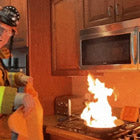 Fire
Fire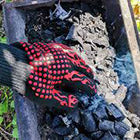 Safety
Safety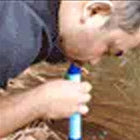 Survival
Survival Protection
Protection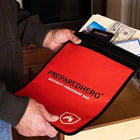 New
New
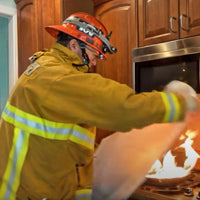 Fire
Fire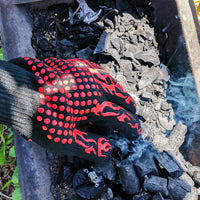 Safety
Safety Survival
Survival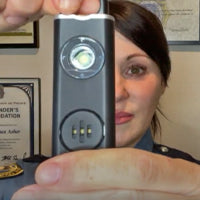 Protection
Protection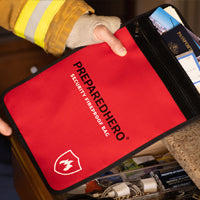 New
New
